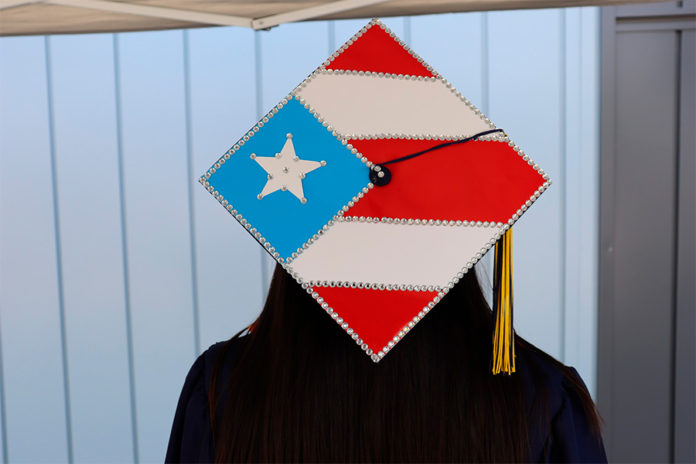President Biden, Vice President Harris, and the U.S. The Department of Education (ED)announced a plan for loan forgiveness in August. The ED will provide up to $20,000 in debtrelief to Pell Grant recipients with loans, which are students whose Expected FamilyContribution is at or below $5,846, and up to $10,000 in debt relief to non-Pell Grant recipients.
It is important to note that this debt relief is one-time and has some eligibility requirements. To be eligible for the relief, one’s individual income has to be less than $125,000 or $250,000 for households; the federal student loan had to be disbursed on or before June 30, 2022 in order to qualify; and had to be one of the following loan types: William D. Ford Federal Direct Loan (Direct Loan) Program loans, Federal Family Education Loan (FFEL) Program loans held by ED or in default at a guaranty agency, Federal Perkins Loan Program loans held by ED, Defaulted loans (includes ED-held or commercially serviced Subsidized Stafford, Unsubsidized Stafford, parent PLUS, graduate PLUS; and Perkins loans held by ED). Essentially, this means that subsidized loans, unsubsidized loans, parent PLUS loans, and graduate PLUS loans held by ED are all eligible for debt relief. Consolidation loans are also eligible for relief, as long as all of the underlying loans that were consolidated were ED-held loans and were disbursed on or before June 30, 2022. The Student Loan Debt Relief Application is available online: https://studentaid.gov/manage-loans/forgiveness-cancellation/debt-relief-info and in paper form (downloadable via PDF) in English and Spanish. If internet access is a barrier or a paper version of the application is wanted instead, participants can download the PDF copy of the Student Loan Debt Relief Application, print it, fill it out, and mail it to the fulfillment center described on the application. Upon processing of the form, one may be contacted for additional information, such as income verification. The option to opt out of the program is also available.

As of November 3rd, 2022, close to 26 million individuals applied for the student loan forgiveness program, with the Biden-Harris administration estimating that up to 43 million borrowers in total could be helped based on ED loan records. From the inception of the program, it was met with legal challenges and criticism. On November 10, a Texas federal judge ruled the program unconstitutional and unlawful and four days later, a Missouri appeals court placed an injunction against the program pending further appeals. States including Arkansas, Iowa, Kansas, Missouri, Nebraska, and South Carolina state that the president overstepped his authority with mass cancellation, arguing that without Congress, the president doesn’t have the power to issue nationwide debt relief. White House spokesman Abdullah Hasan stated, «Republican officials and special interests are trying to rob middle-class families of the relief they need and deserve, but the president doesn’t back down from a fight, especially one for middle-class families.» On Wednesday, a federal appeals court denied the Biden administration’s request to block a Texas judge’s ruling that declared the policy unconstitutional.
The Biden administration asked the Supreme Court of the United States (SCOTUS) to pause another ruling that blocked student-debt relief. If SCOTUS does not pause the ruling, Biden asked SCOTUS to hear arguments in the case next year. The month of November saw three challenges in the courts, showing signs that the road to re-enactment of the student loan relief program is one with uphill battles, as the program is faced with public criticism and support. This political blockade is seen to disproportionally affect many lower and middle-class families who had no choice but to take out burdensome loans, as college tuition rates have tripled in recent years. Not to mention the undocumented, predominantly Latinx, students who do not receive financial aid from their institutions. The pressure is now on the Supreme Court to stand with the millions who indebted themselves with the hope of achieving the American Dream through higher education.
As of today, the Student Loan Debt Relief, remains blocked, the online form is not available, and the Federal government is no longer accepting applications. While the government works to overturn the orders, if an application was submitted prior to November 14, 2022, it Will be held. Due to the ongoing pause, the loan forgiveness program got pushed back from the original application deadline of December 31, 2022, to Jan 31, 2023. Monitoring of the Federal Student Aid website is recommended as no set date has been announced for SCOTUS hearings.
There are other ways to secure relief. Certain borrowers may be eligible for forgiveness.
For example, borrowers who are employed by nonprofits, the military, or federal, state, Tribal, or local government may be eligible to have all of their student loans forgiven through the Public Service Loan Forgiveness (PSLF) program. The PSLF is a separate program that has different requirements and qualifications that should be further researched if applicable. The form is found here: https://studentaid.gov/sites/default/files/public-service-application-for-forgiveness.pdf







